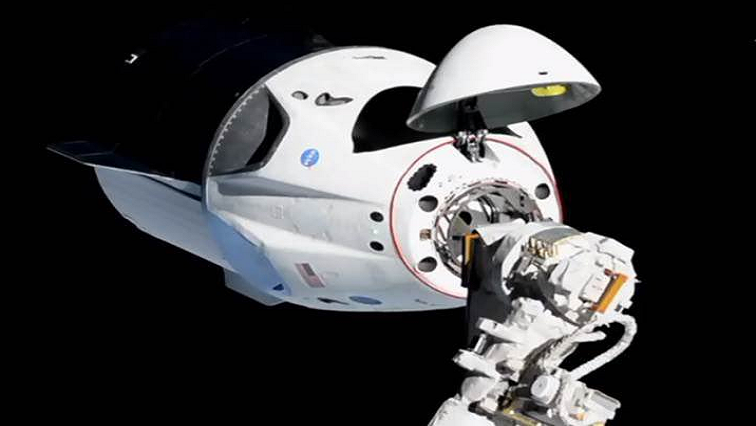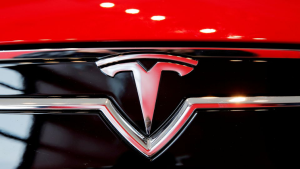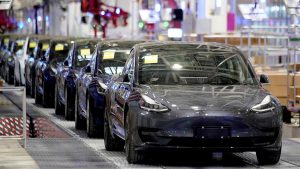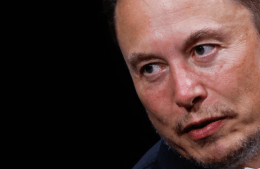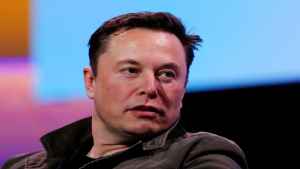SpaceX’s new Dragon capsule successfully docked on the International Space Station on Sunday, NASA and SpaceX confirmed during a live broadcast of the mission. “We can confirm hard capture is complete,” NASA said. The announcement was met with applause at the Johnson Space Centre in Houston, Texas.
The first @Commercial_Crew mission arrived at the space station today when the @SpaceX #CrewDragon completed soft capture on the Harmony module at 5:51am ET. #LaunchAmerica https://t.co/Bgcgac0O50 pic.twitter.com/KfNFpHxpGx
— Intl. Space Station (@Space_Station) March 3, 2019
The docking began at 1051 GMT, more than 400km above the Earth’s surface, north of New Zealand; 27 hours after the capsule’s launch on a SpaceX Falcon 9 rocket from the Kennedy Space Centre at Cape Canaveral in Florida.
Although the contact appeared slow, the ISS and the capsule were moving at a speed of over 27 000km per hour in orbit around the Earth. On board the ISS, the crew, American Anne McClain, Russian Oleg Kononenko, and Canadian David Saint-Jacques, were scheduled to open the airlock at 13:30 GMT.
The @SpaceX #CrewDragon is go for docking leaving its 20 meter hold point. #LaunchAmerica https://t.co/qpyi2LM11l pic.twitter.com/9pc6t6oqbF
— Intl. Space Station (@Space_Station) March 3, 2019
The mission is a test launch with only a dummy on board the capsule ahead of a manned flight scheduled for later in 2019. The Dragon capsule will remain on the ISS until Friday before detaching to splash down in the Atlantic. It will be slowed by four parachutes, in what is the one of the mission’s riskiest stages.
The launch is a key step towards resuming manned space flights from US soil after an eight-year break.
The hatch is open! At 8:07am ET, crew members aboard our orbiting laboratory opened the hatch between @SpaceX’s #CrewDragon spacecraft and the @Space_Station. Watch: https://t.co/oJKHgK8eV7 pic.twitter.com/NKFisziToV
— NASA (@NASA) March 3, 2019
SpaceX, founded by billionaire Elon Musk, has made the trip to the ISS a dozen times before since 2012, but only to refuel the station. Transporting people is a more complex task, requiring seats, a pressurized cabin with breathable air, temperature regulation and emergency infrastructure.
After its shuttle program was shut down in July 2011 following a 30-year run, NASA began outsourcing the logistics of its space missions. It pays Russia to get its people up to the ISS orbiting research facility at a cost of $82 million per head for a round trip. In 2014, the US space agency awarded contracts to SpaceX and Boeing for them to take over this task. In SpaceX’s case, NASA has agreed to pay $2.6 billion for six round trips to the ISS.
The switch from NASA owning spacecraft to paying private firms for a service was initiated under former president Barack Obama, but due to development delays, has come to fruition under US President Donald Trump.
“We’ve got NASA “rocking” again. Great activity and success. Congrats to SPACEX and all!” Trump tweeted Saturday evening.
Since 2017, NASA’s official mission has been to return to the Moon, a project awarded $21.5 billion by Congress in the 2019 budget. Jim Bridenstine, head of the US space agency, has explained NASA wants to reduce costs in low orbit to devote resources to getting back to the Moon and constructing a small space station in lunar orbit in the 2020s.
“As a country, we’re looking forward to being one customer of many customers, in a robust commercial marketplace in low Earth orbit, so that we can drive down costs and increase access in ways that historically have not been possible,” he said Saturday following Dragon’s launch.
Musk has however, admitted that marketing travel in the Dragon capsule is not a priority and he is more interested in distant exploration of the solar system. At the post-launch press conference on Saturday, he reiterated his dream for a permanent Moon base and sending people to Mars. Musk has already locked in his first private customer to fly to the Moon: Japanese billionaire Yusaku Maezawa, but it won’t happen before 2023 with the rocket, far more powerful than that used for the Dragon mission, still in development.


